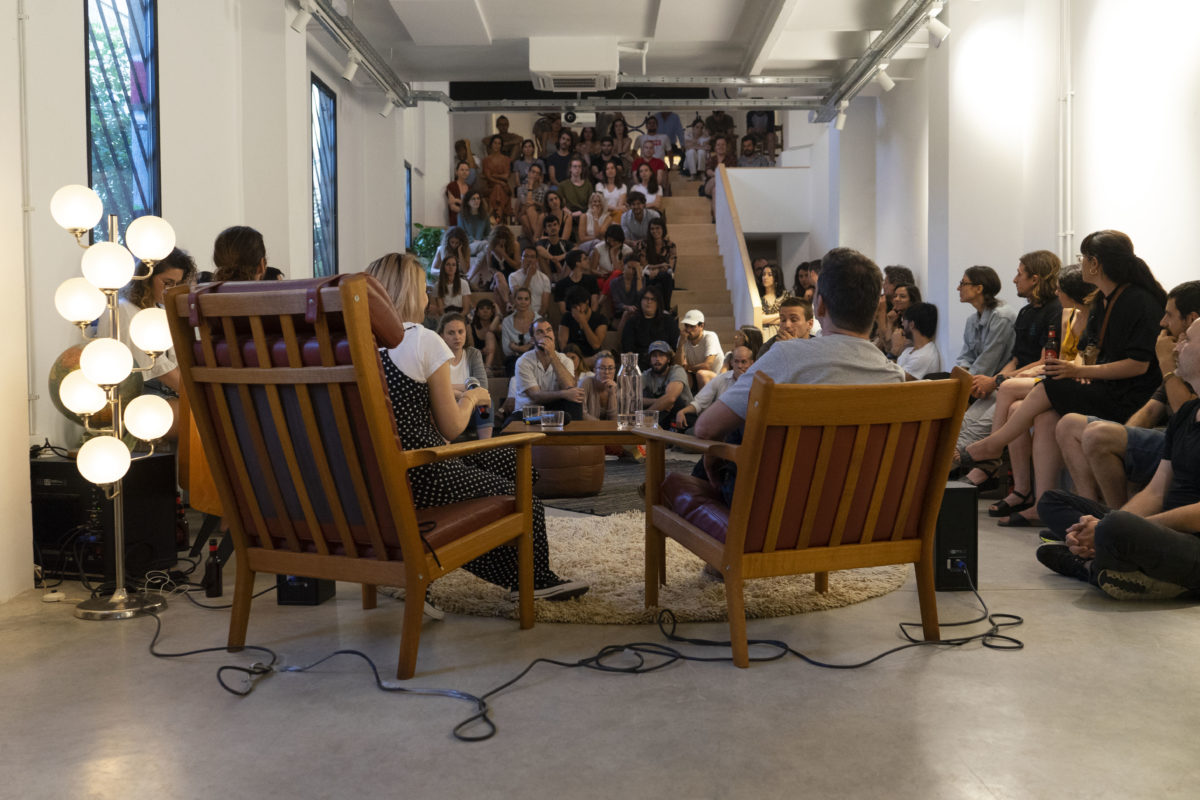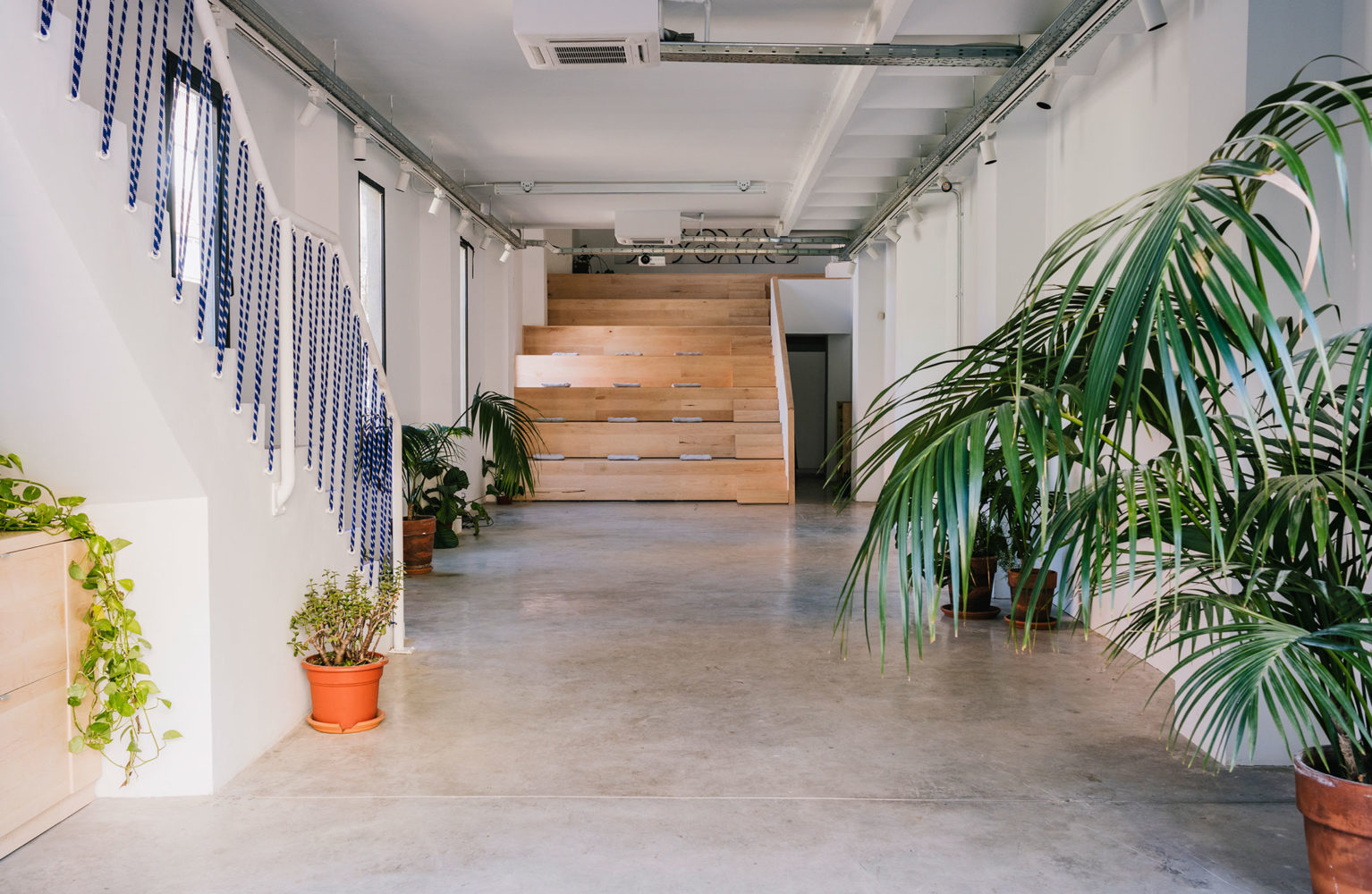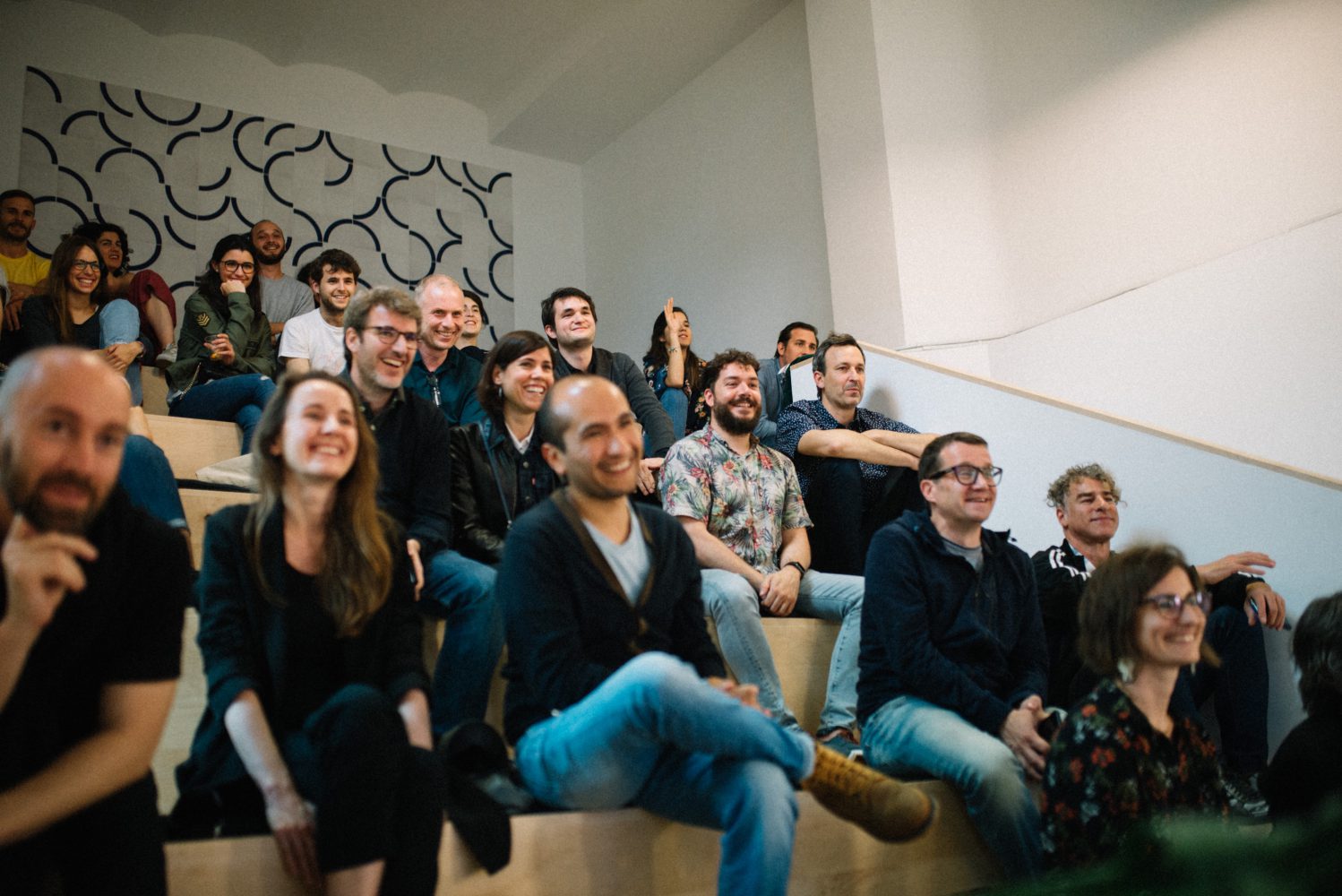By Robert A. Sampson
10 Things We Learned from YesFuture & Sustainn
10 Things We Learned | 5 min read

Imagine if we began treating every single piece of trash not as waste, but as a resource.
On June 26, Firma Talks invited three experts in the field of circular design–YesFuture, Sustainn, and Go Zero Waste–to tackle one of today's biggest challenges, our waste. We sat down and listened to Olga Rodriguez from YesFuture, and Carlos León from Sustainn address different angles of cutting plastic and generating less waste.
With YesFuture, Olga is leading the Zero-Waste movement through bulk purchasing. With Sustainn, on the other hand, Carlos is helping businesses embrace circular business models to inspire better products and services.
The talk was moderated by Oriol Segarra, the founder of Go Zero Waste, a circular economy consultancy based in Barcelona. Here are our main takeaways from that night:
#1: You've got to think outside the (cradle-to-grave) box
In a nutshell, a circular economy is a shift from a degenerative to a regenerative model. So let's say you make jeans. In a circular economy model, you would need to factor in the entire life cycle of the product to make your amazing jeans. This means considering the fabric producer who purchases the cotton from a farmer, and even the farmer himself. Where is the farmer getting his cotton seeds? Is it a major supplier?
In a regenerative model, you've radically deconstructed the entire lifecycle of your product. Once you've done that, you can begin to consider alternatives to rescue the material after their use. That's the first (major) step.
#2: Challenge the status quo of plastic
Steve Jobs perhaps best captures the "do what you love" ethos now common in entrepreneurial circles. But for Olga, her passion was born out of a conversation she had one night with her flatmate about the absurd use of plastic. So she started a supermarket. OG move Olga *cue Snoop and Dre music*.
"At the beginning of 2017, suppliers said they couldn't send anything that wasn't in plastic." So we went to small producers who could adapt. Soon Olga's outraged snowballed from "let's waste less plastic" to "let's only work with companies that are also committed to not generating waste." By taking a pain point and using that to inform the core business strategy, Olga managed to convince suppliers to adapt based on what they asked. And it all began by questioning the status quo.
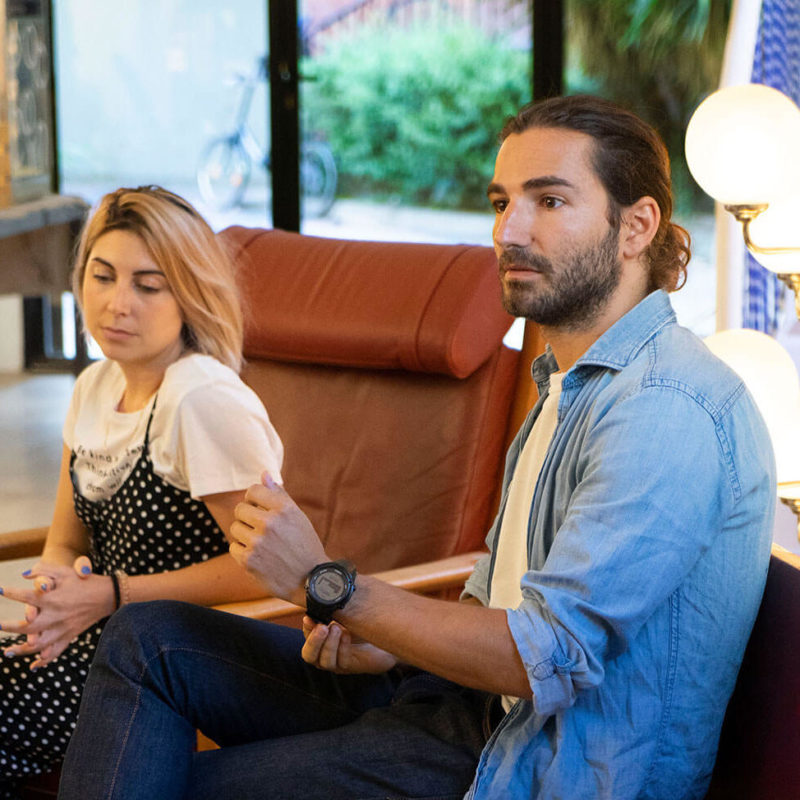

#3: Prioritize access over ownership
There's no planet B, which means we have to make the best use of our (finite) resources. Ownership of goods can be wasteful for the planet because the manufacturer has no incentive to make use of the resource again. A service, however, creates incentives for more efficient use of resources because the service provider is responsible for handling the material and making it useful again.
So, the next time you hear someone make fun of Millennials, about how they're the "rent-over-own", "everything-as-a-service" generation, you can tell them to cool it, because they're the ones making a difference.
#4: No need to be a hero to go zero.
Put your patchouli away; a zero-waste supermarket is no longer a fringe bohemian concept but is rather evolving to be the next big thing. Yes Future's overarching aim is to encourage zero-waste living, but this doesn't mean having to sacrifice your way of life. This was one of Olga's more salient points, to build her business where zero-waste would complement, rather than substitute, the model. The focus shifted not only on saving waste but also contributing to something innovative. Olga emphasized this point, saying "we are adapting to new generations to be attractive for all sorts of people." In this case, the supermarket's appealing aesthetic invited the consumer in. By using that, she could explain the motive behind why they were doing it.
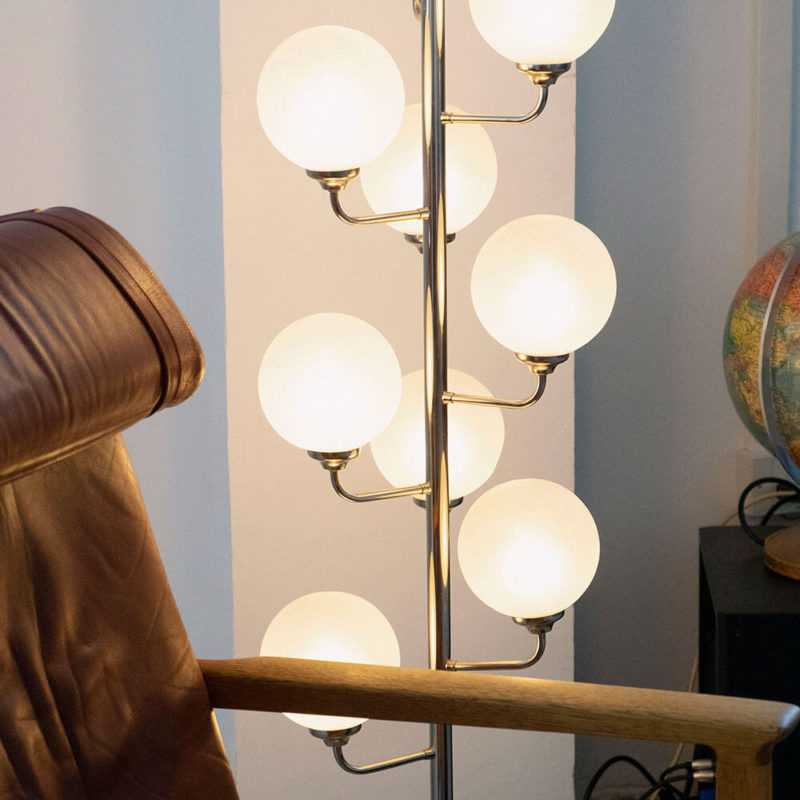
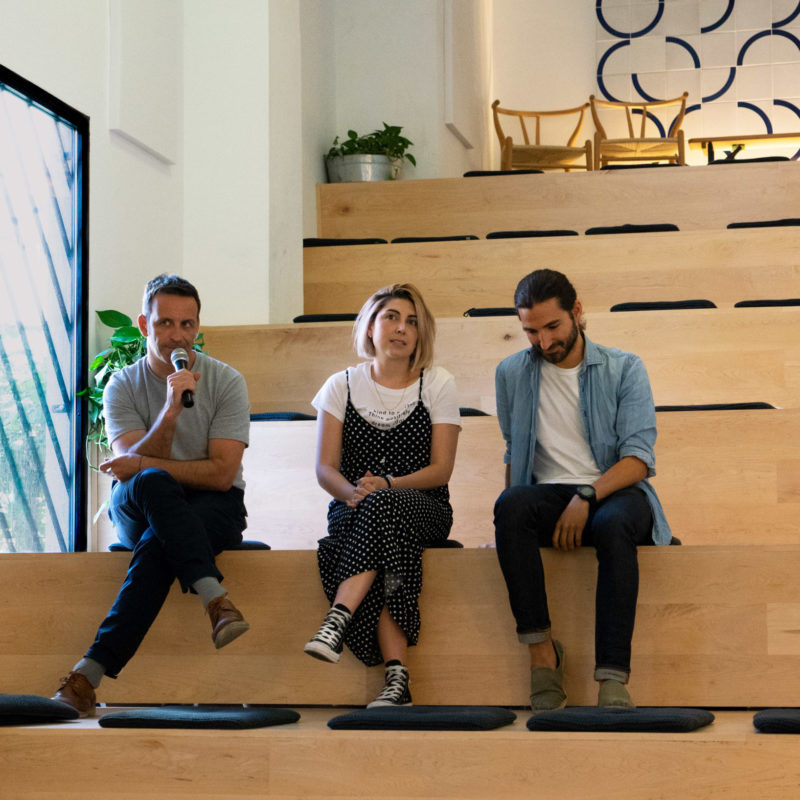
#5: Being aware of plastic use is half the battle in reducing waste
Contrary to what many think, getting started with zero-waste living is quite easy. When asked about how to cut plastic use and generate less waste, Olga had some pretty straightforward advice. "All you have to do is be aware of the waste you generate and find ways to reduce it. You can reduce a lot of waste in a short period." Instead of treating garbage disposal as some mindless activity, aim to be conscious of what you are throwing away. Willing to try things and to explore alternatives is all it takes. But Olga did emphasize that once you start being aware, cutting plastic use and reducing waste becomes addictive, in a good way.
#6: Larger retailers are catching up
So let's say you go full Zero Waste. No more plastic. No more waste. Problem solved, right? Well, unfortunately, not really. Where the Zero-Waste movement has the most to gain is with large retailers, that produce high amounts of waste. The good news is retailers are already experimenting with programs to diminish their waste. For instance, TerraCycle, an initiative that aims to serve products like Tide and Hagen Daaz in reusable packaging, is already carrying out a few pilot projects in Paris and NYC.
Similarly, supermarket giant, Carrefour, is doing something similar with its bio-product line. While the circular economy movement remains in its infancy, retailers are catching up. And hopefully, others will too.
#7: The solution will come from our "thinky pain"
"If we create something so good, we don't see it as an obstacle. The power lies in creativity, so now that we are in a creative agency, we can be part of the solution." This was one of the remarks from one of the audience members in the Q&A, and it speaks true to how we feel about the responsibilities we have as creatives.
For us, the challenge lies in persuading consumers to embrace practices that generate less waste. But this often implies a sacrifice of some sort. Either you have to organize your materials if you are purchasing in bulk. Or the idea of a bio or eco-friendly product often means sacrificing your wallet to afford it. But here is where our creativity comes in handy. We need to address these pain points so that these so-called sacrifices are not seen as sacrifices. To do so, we need to make the product so enjoyable that we no longer see it as an obstacle. The key here is creativity, aka our "thinky pain."
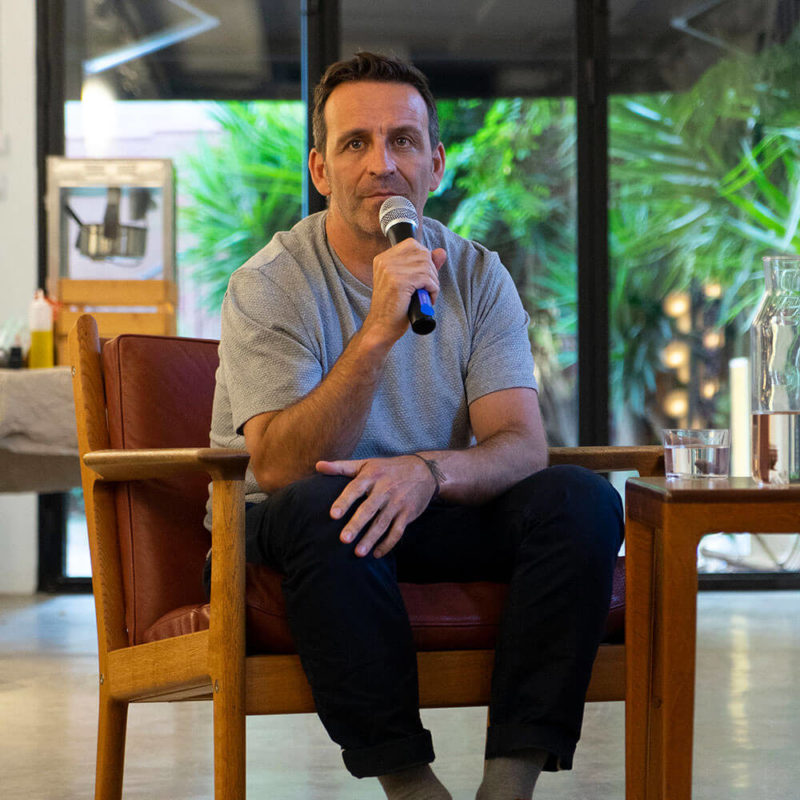
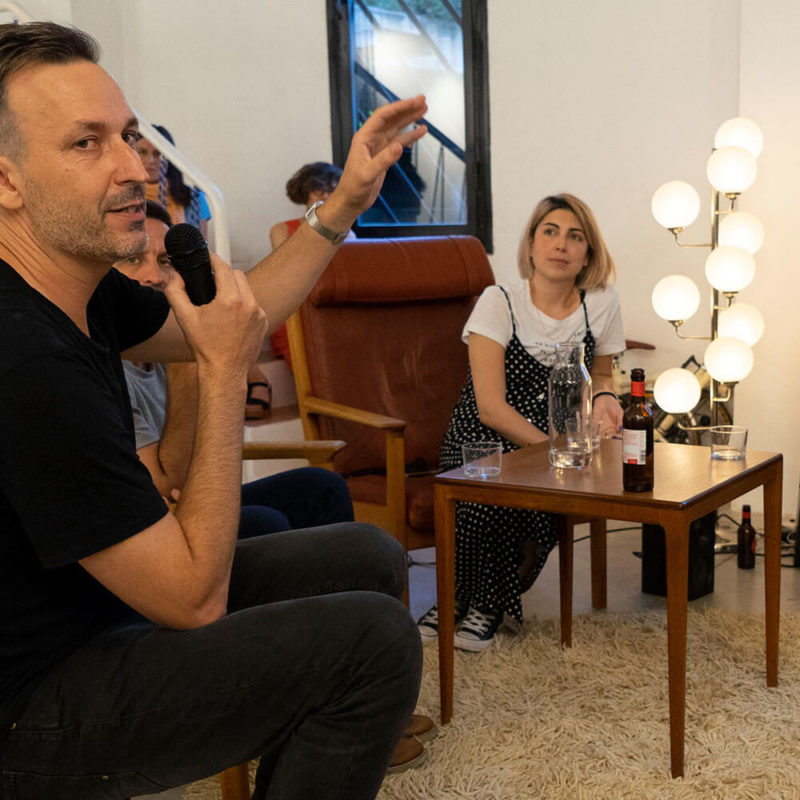
#8: Hindsight is 80/20
A lot of companies obsess over balance sheets, and this is a problem. Because companies focus too much on balances, they end up giving little to no percentage of their resources to explore more sustainable solutions. This is a point Carlos brought up in the discussion, pointing out that if firms would commit 80% of their resources to exploitation, and 20% to exploration, then we would see meaningful changes.
Unfortunately, what ends up happening is companies ignore exploring alternatives and opt for trendy labels to improve their image to gain a competitive edge. Ignoring longer-term needs are often sacrificed for the goal of selling more and reducing costs. It doesn't require a drastic commitment, only allocating resources to explore alternatives, not a strategy to sell more. But to get there, we need more control and transparency.
#9: Designers are excited about self-sufficiency but worried about complacency
"What's better, bio/eco or local?" Is the question Marc, Firma's co-founder, raised in the Q&A session. The response? It depends. If it's for you or the planet, it all depends on how we see it. Olga mentioned that a local product is preferable, but if the land has been exploited to the point that it is no longer useful, then it is not better. Ecologic will be healthier, but if it comes from the other side of the planet, then it is also not ideal for the planet. In the long-run, however, the ecologic product will be better for our environment as well as for health because it minimizes damage on the soil/land.
#10: Waste is a flaw in the design
I like to save the best for last. In my opinion, the biggest takeaway of the night came from Carlos when he said: "waste is a design flaw, and everything around us is a resource if we design it to be that way." We can introduce a new generation that treats waste entirely different. All it takes is a shift in perspective and a commitment to work towards a world we would like to live in. To think that every waste we've generated doesn't need to end in a landfill. It seems like a radical departure to have to rethink everything from scratch. But if we can treat waste as a flaw, then we can uncover more effective ways of dealing with it.
Plastic is not the problem. The problem is the use we give it, mostly single-use. On the one hand, the discussion drew attention to the painful realities we are facing. On the other, the debate gave insight into what we can do and what individuals are doing to get rid of waste. Simple awareness of how we consume can inspire us to make better decisions, and hopefully, impact businesses to do so as well.
READING

Climate Neutral Certified
We’re proud to announce that this year we are once again Climate Neutral Certified! Over the last few years, we have implemented several actions that allowed us to start the path of becoming a more responsible and conscious business; Climate Neutral is one of the steps we're taking to accomplish this exciting goal.
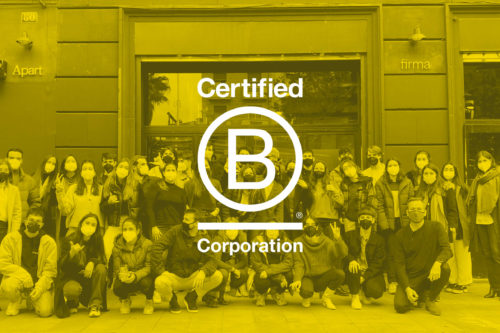
We are finally a B Corp certified company!
After one year of dedication, we are finally a B Corp certified company! It has been a transformational process in which we have learned a lot and worked harder to improve our standards as a company and as transformational agents.
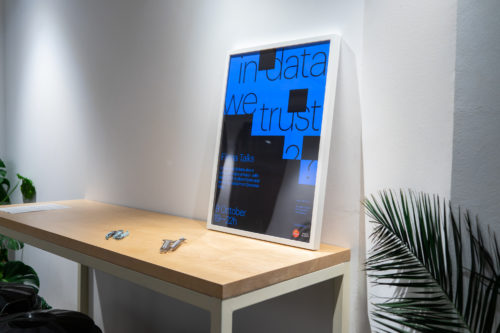
10 Things We Learned from Data
Should we be paying attention to the impact data and algorithms are having in our society?
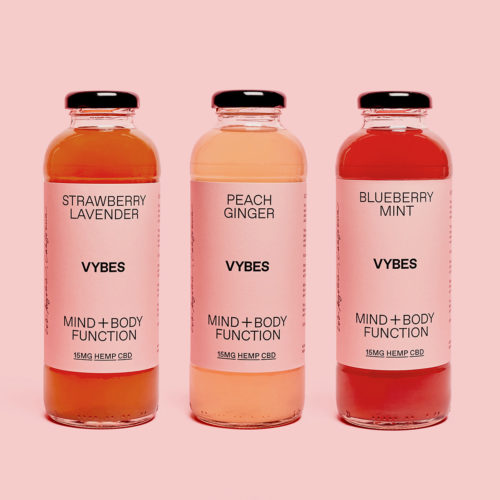
Uncovering CBD with Vybes founder Jonathan Eppers
We sat down with Vybes founder Jonathan Eppers to discuss the rise of the CBD industry in the US, how it's affecting branding and what's Vybes' take on the beverages category.

On our way to be a B Corp
After two days at the B Corp Summit in Amsterdam, I gained the inspiration, the energy, and the motivation to become a corporate sustainability activist. Activist? Oh, that sounds uncomfortable. Yes, that sounds like stepping out of the comfort zone.
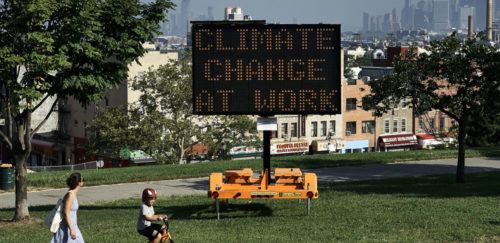
Eddie Would Go: Committing To A Greater Purpose
Companies can be a force for good. In fact, committing to a greater purpose is a growing demand among consumers. Through this article we explore some of the 1% For The Planet members who are taking a stand.
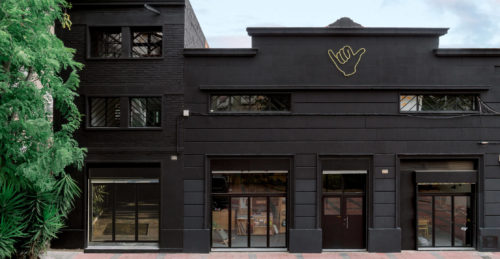
Apart: An Open Space for Innovation
Branding and innovation agency Firma, created Apart for pushing conversations, insights and ideas forward...
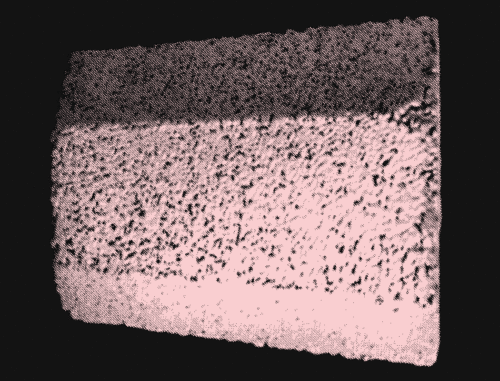
10 Things We Learned from Andreu Carulla & Curro Claret
“Upcycling has more to do with the value of the material”, he said. If the value of the material is higher than when it was a product, then it is effectively upcycled.”

Focus, focus and focus
During a trip to Logroño I discovered Bar Soriano, which made me realize that focusing on a single product allows you to work it to perfection.
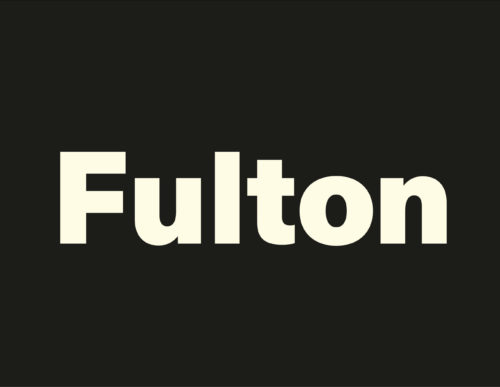
Fulton and the power of combining letters
Let’s start with this random name that came into my mind: Fulton. You have only read the name. Never heard of Fulton. But think about Fulton and let your brain start imagining.

When dopamine wakes you up, you’re hooked
With hundreds and hundreds of notifications that you just can’t avoid opening, the well-known FOMO (fear of missing out) comes over you

Storytelling can make or break a brand
We can all agree that everyone enjoys a good story; whether it’s telling it or listening to one…proof of it is the irrational online-streaming binge watching most of us have inexplicably given into at one time or another.
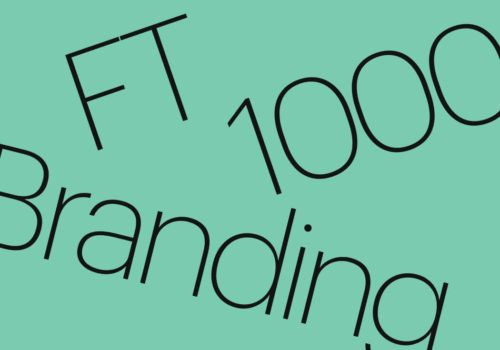
Firma at Financial Times FT1000 2018 Ranking
We are very proud to have been chosen by the Financial Times as one of the most innovative, fast growing companies in Europe for the 2018 edition of FT1000.

Let’s welcome what will come
We believe that combining innovation processes, business strategy and a creative perspective is the way to build successful brands.




